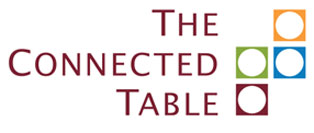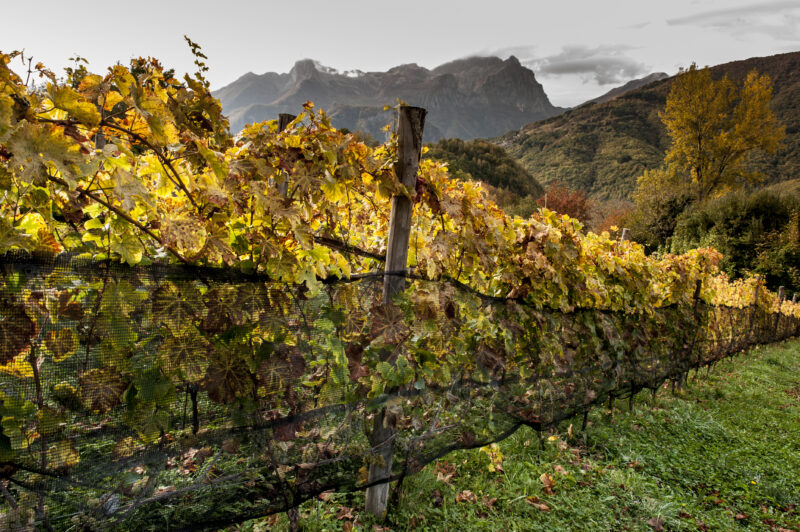
Maestà della Formica translates to the “Majesty of the Ant.” The winery is named after a nearby mountain pass in the Apuan Alps and is near Garfagnana about an hour and a half north of Lucca. At 1050 meters above sea level, this is a wild and remote mountain area. The 3.2 hectares of vineyards are all farmed biodynamically and range from 50 to 150 years old.
Over a multi-course dinner at Chef Cristiano Tomei’s Ristorante L’Imbuto in Lucca, we met with Andrea Elmi, cofounder of Maestà della Formica, and tasted selections of his wines. We tasted a few more of his wines the following day at Vini Delle Coste, a two- day wine program March 30 and 31 which took place in Lucca. The program highlighted wines from select coastal winemaking regions of Italy, including Tuscany & Liguria and Abruzzo, Emilia Romagna and the Marche.
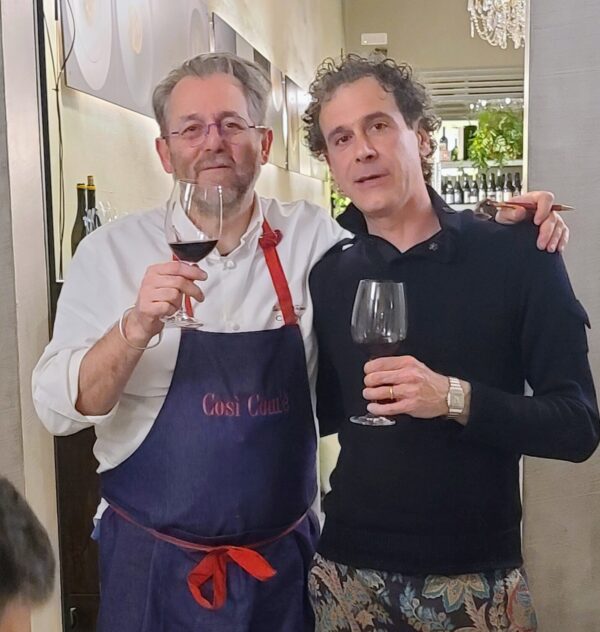
Cristiano Tomei, Chef/Owner, L’Imbuto, with Andrea Elmi, CoFounder, Maestà della Formica
Elmi and his business partner, Marco Raffaeli, met while studying viticulture and oenology at the University of Pisa. After working with different wineries in Tuscany, they joined forces to establish Maestà della Formica in 2013 and released their first wine in 2018. Maestà della Formica’s wines are all IGT. Many are field blends which is another distinguishing characteristic of the wines made in this wild west part of Tuscany where terroir is key. Grapes are mixed together in small parcels resulting in a mélange that could include reds blended with small amounts of Sangiovese, Syrah, Cilegiolo, Canaiolo, Gamay, Blaufränkisch and Abrusco (among others). Maestà della Formica’s main whites are made with Riesling, Vermentino, Trebbiano and Malvasia.
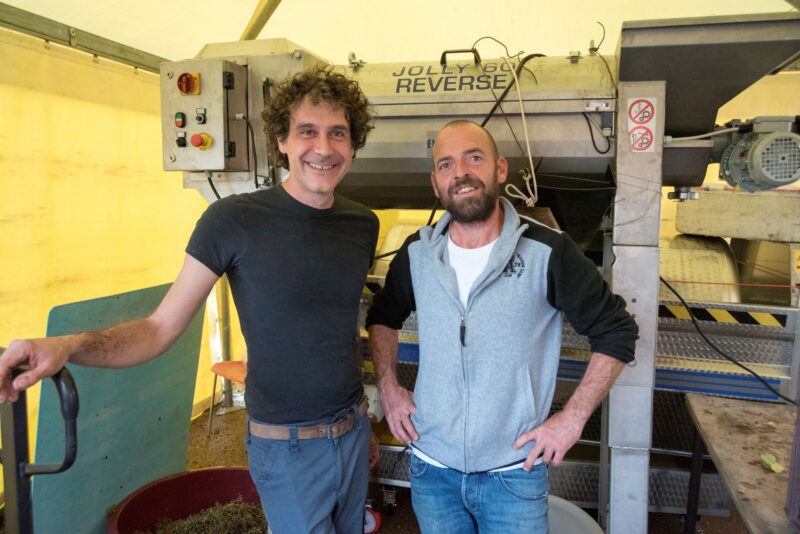
Andrea Elmi and Marco Raffaelli established Maestà della Formica in 2013
Elmi says the blends allow flexibility when one grape harvest may be weaker and another stronger. It also allows some impressive creative expression in the bottle without the strict guidelines of the DOC. We also learned during a master class entitled “Four Expressions of Lucca’s Terroir” that 70% of the producers in this area adhere to biodynamic farming.
Among the Maestà della Formica wines we tasted we were particularly taken with the Riesling Renano IGT Toscana, both 2022 and 2023 vintages, and Gamo 2023 IGT Toscana, a blend of Syrah, Cilegiolo, Gamay, Cabernet Franc and Abrustine. Maestà della Formica is represented by David Bowler Wines in the USA. www.maestadellaformica.com @maestadellaformica
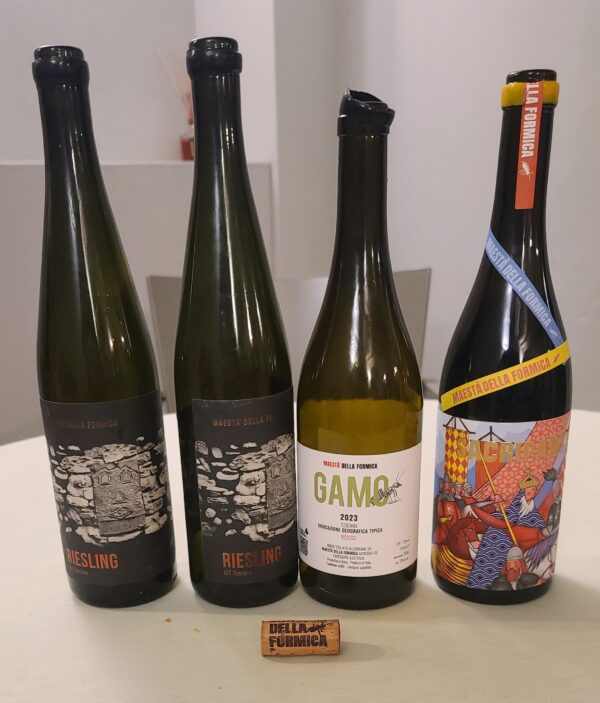
Maestà della Formica Wines we tasted at the dinner at L’Imbuto.
Listen to our conversation with Andrea Elmi, founder of Maestà della Formica, on The Connected Table Live. Or listen anytime on demand on more than 65 podcast channels including Spotify, iHeart Radio, Apple Podcasts. Pandora, Spreaker, Amazon Podcasts and Stitcher. Below is a link to this show episode:
